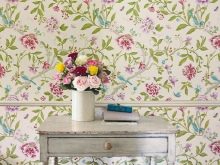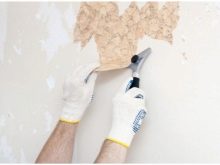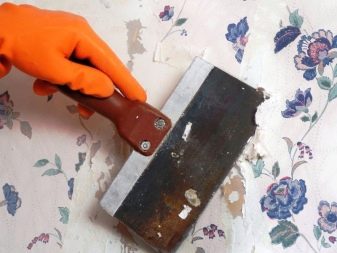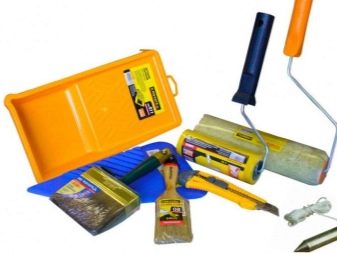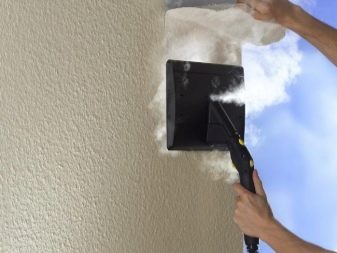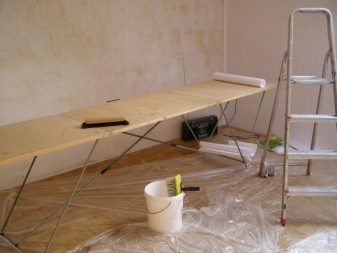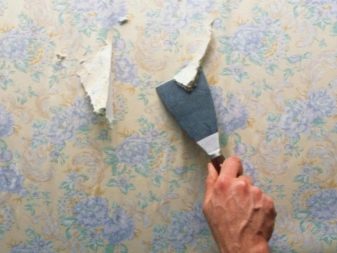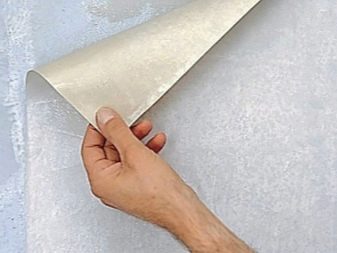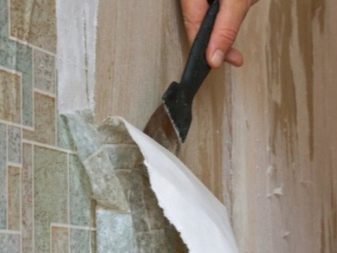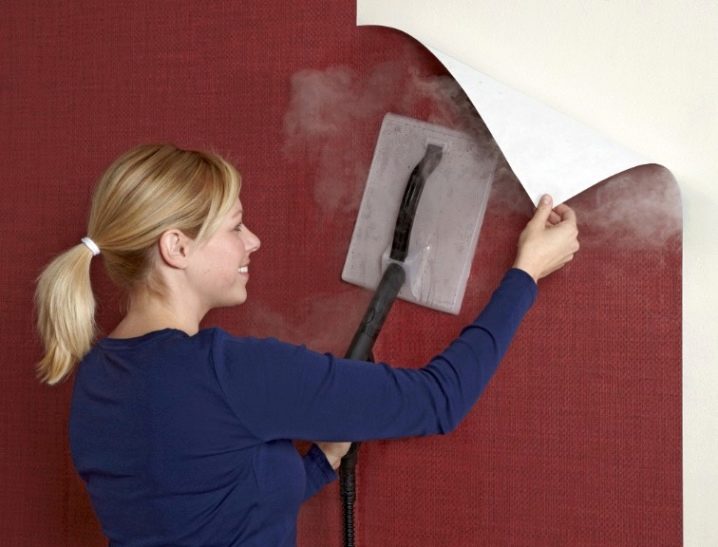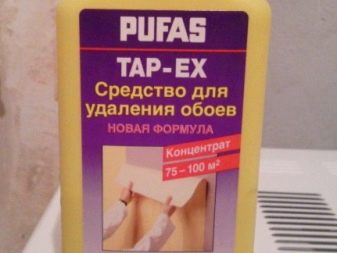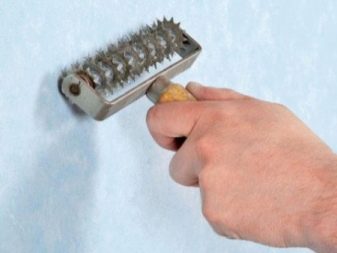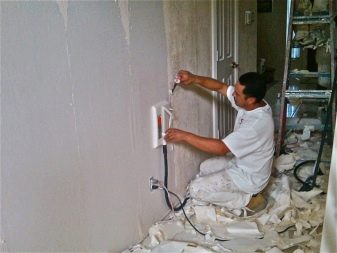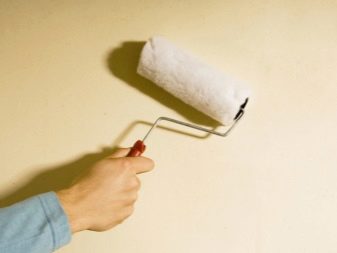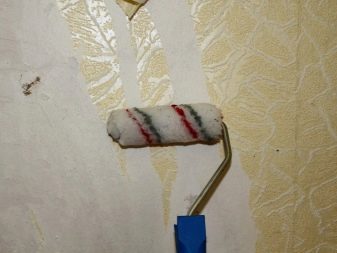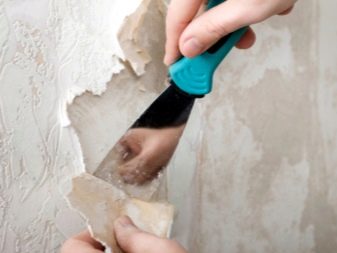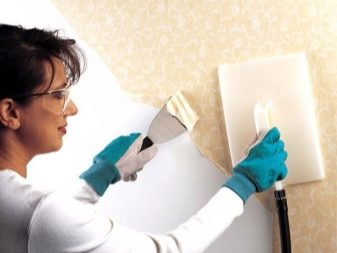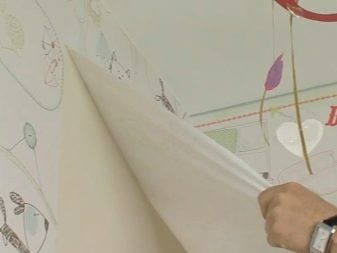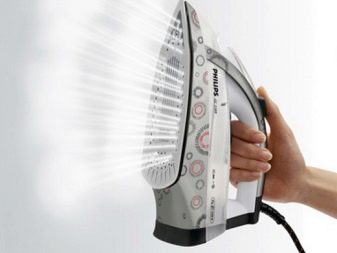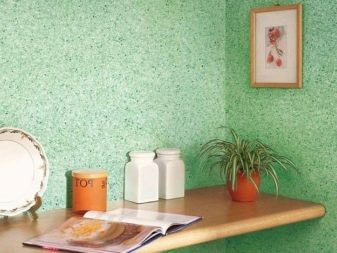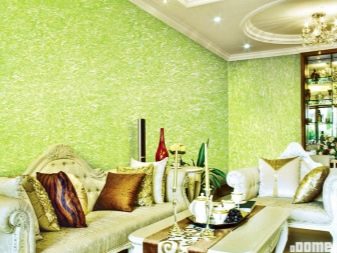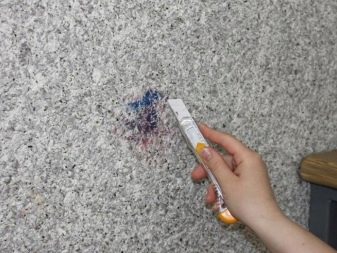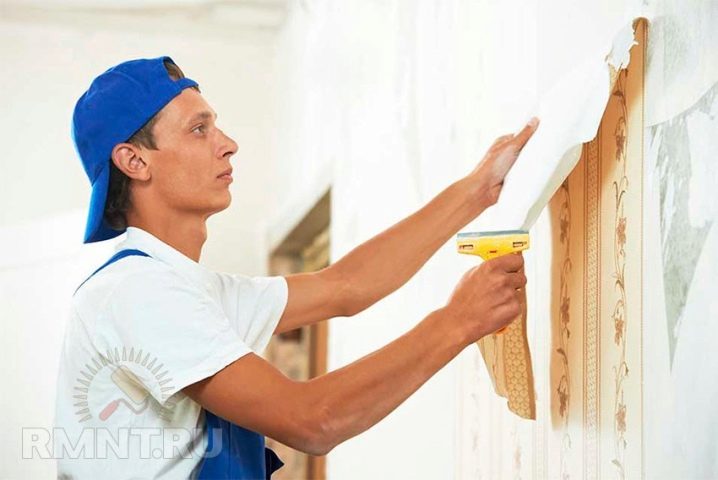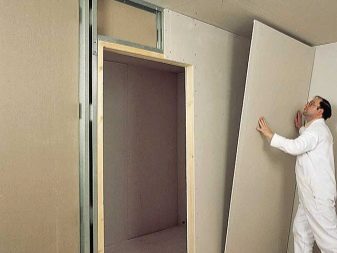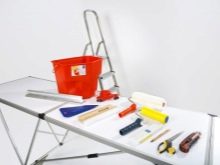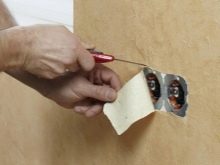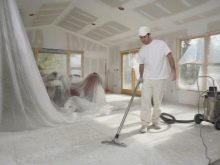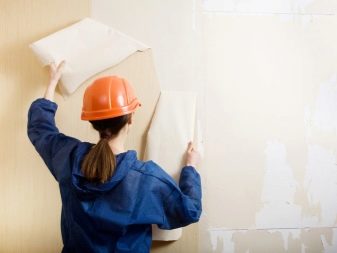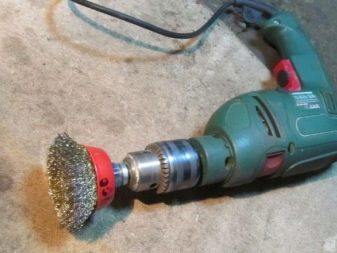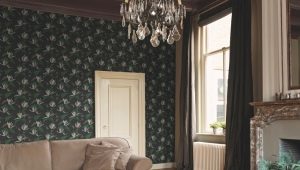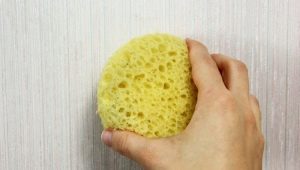Remove old wallpaper without damaging the walls.
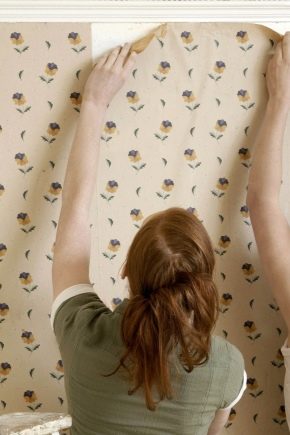
A measured and calm life ends with the onset of repair. It seems the process is joyful, the changes are inspiring, but too many questions begin to torment the mind. Everyone will face the fact that before sticking new wallpapers you need to get rid of old ones. First, decide on the method of removal, based on the material of your wallpaper, and then get down to business.
What to shoot?
To remove the wallpaper will need special tools and additional materials. Just create all the hands is unlikely to succeed. An exact list can be made only after you decide on the method of withdrawal.
Here is a universal list of tools:
- Spatula (scraper), and better a few - wide and narrow.
- The clerical knife is needed both during removal and in preparation for it.
- A needle roller ("tiger") for wallpaper - perforation tools.
- Simple paint roller with interchangeable handles - long and short.
- Tray for a special solution or plain water. An alternative would be the usual bucket or basin.
- Glue Thinner.
- Plastic film to protect the floor from any dirt and damage.
- Paint and insulation tape.
- Stepladder need for comfortable work at height.
- Construction dryer.
- Grinding belt machine.
- Steam Mop.
Now you have read the most complete list of necessary equipment. You will select the correct adaptation only when you determine an acceptable method of removing the old wall covering. You will need the film already in preparation for work. Be sure to cover it with the floor, window sill and furniture that cannot be removed from the room.
How to quickly and easily remove the wallpaper?
Old wallpaper from the walls to shoot just need. Some say that you can glue a new coating on the old - it is not.Consider that your walls will be rough, and new wallpapers will not please you with their appearance.
Properly dismantle the old cover - the key to future success. You can remove the old coating from the walls and ceiling with no extra effort in the following ways:
Manually
If the wallpaper is really old or glued to glue of dubious quality - they are easy to remove without additional funds. Prying the wallpaper with your hands is extremely uncomfortable - you will definitely need a spatula or a kitchen knife. It will help effectively and correctly remove even the smallest fragments. You only need to pick up the top edge with a spatula and manually peel the cover. Small scrap just scrape off the same tool.
Wet method
If the wallpaper is moving away badly, then your main weapon is hot water. For a wet method of removing the wallpaper at home, you can use a paint roller, spray or a simple sponge. Moisturize each centimeter of old paper cover thoroughly and liberally. Wait about 20 minutes for the wallpaper to become completely saturated with liquid. Next, remove them with a spatula, as in the previous method.
Lifting steam
Hot steam will help to easily peel off wallpaper.As a rule, a steam generator, a steam mop is used for this. At home, you can carry out manipulations with an iron with steam function. Step by step, pour hot steam into the wallpaper and they will become more pliable than ever.
The use of special liquids
This method is considered the most radical and aggressive. He will save when all of the above are powerless. Special compounds penetrate the canvas and, as it were, dissolve the adhesive base.
All of the above methods are great for removing wallpaper from concrete walls. The latter should be discussed in more detail. This method is used not only in difficult cases, but also when you want to save time as much as possible. The special composition of Pufas Tap-Ex (Pufas Tap Ex) is deservedly popular. The tool can completely remove various coatings.
Means for sale in packs of 250 ml - this is enough for processing from 75 to 100 m2. The composition is diluted in hot water, the concentration is chosen according to the instructions. Apply the solution with a paint roller or brush. Sometimes the procedure requires a repetition after 15 minutes.
If you cover moisture-proof wallpaper, be sure to first go over it with a needle roller.
It is necessary to use means carefully.Be sure to protect your hands, eyes and body. Contact with the body may cause minor chemical burns. Keep children and pets away. Remnants of Pufas Tap-Ex are washed from the walls with plain water and do not manifest themselves on a new surface.
Remove from drywall
With drywall should be treated very carefully. It is able to absorb moisture and lose its properties. If you putty the wall before sticking wallpaper, then use the chemical method of removal. Act deliberately, the solution contains water and in large quantities will harm the drywall.
An interesting way to remove the coating with cheap wallpaper glue Deserves attention. Purchase the tool, dilute according to the instructions and cover with a solution of old wallpaper. Glue dries for a long time and in the process of wallpaper. Thanks to this property, removing the wallpaper will be much easier.
If both methods do not suit you, there is a more radical option. You can remove the coating along with the top layer of drywall. The material consists of many glued sheets, so it will be easy to do. Using a molar knife, separate the first sheet of drywall and remove.
Different types of wallpaper
It is already clear that you need to remove the old finish regardless of whether you will glue the new wallpaper or prepare the walls for painting. To remove the wallpaper on a paper basis is quite simple, each of the above methods will cope with this. But the modern market offers many options for wall covering, and each of them must be able to properly remove.
Ways to remove different types of wallpaper:
Non-woven wallpaper
This type of coating appeared quite recently and is popular. The surface of the material is quite strong and calmly transfers moisture. To remove them with water and steam is as useless as waiting for them to fall away.
A rough mechanical impact will be required. for the destruction of the upper protective layer of wallpaper. A spiked roller or tiger will come to your aid. If it is not possible to scrape such inventory, then carefully scratch the coating with another sharp and hard object (knife, awl). Scrape so as not to damage the plaster under the wallpaper.
After damage to the shell, you can proceed to the water procedures. It is best to apply hot water with a roller. To swell the glue will take about 20-30 minutes.After that, you can gently pry the corners of the strips and remove them with your hands.
Vinyl wallpapers
Facing part of such a coating is made of polyvinyl chloride. Because of this, the wallpaper is waterproof and not sensitive to temperature extremes, chemical agents and mechanical stress. The only weak point of vinyl wallpapers is the paper base. It is on her that we will act when we get there. Use sharp objects in the fight against the protective layer.
Vinyl is damaged after contact with an awl, knife or studded roller. After breaking the coating, you can proceed to treatment with water or steam. Processing will soften the glue. Now just pry the wallpaper and remove the strips one by one. Moisture the remnants of the wallpaper again and remove with a sharp scraper.
There is another way to remove vinyl wallpaper. The upper part of the wallpaper, you can simply peel off from the paper base. You already know how to remove a paper base. Some do not get rid of it, but simply primed and glued a new coating.
Washable wallpaper
Already in name it becomes clear that the traditional methods of removing the wallpaper are useless. Despite the fact that water is not your ally, there is a simple method - a steam generator will come to your aid in the fight against washable coating.Under the influence of steam glue and fibers begin to swell and begin to fall off.
The absence of a steam generator or iron with the sender complicates the task, but there is a way out. You will need a simple iron and a damp cloth. Attach the fabric to the wall and iron. So you need to do with every inch of coverage. After processing, simply pry the edges with a spatula and remove the coating strips.
Liquid wallpaper
This coating is quite elegant and very popular. It is with this coating that silk screen printing is created that will decorate any room. Sometimes this coating can be simply repainted, adapted to the new interior. If this option is not possible, then you need to act on the basis of the properties of a particular coating.
Keep in mind that varnished or painted wallpaper can be removed as easily as untreated.
The most popular liquid wallpaper are an alternative to finishing textured plaster. Such material is resistant to steam, chemicals and moisture. To get rid of this coating will only mechanical effects and special substances. Some do not want to engage in such a difficult dismantling and sheathe the walls with drywall over the wallpaper.The finish itself is resistant to the formation of fungi, and therefore does not require pre-treatment.
Another kind of viscose-based liquid wallpaper is much easier to remove. Get rid of the protective coating, if any. Then wet the walls with warm water several times. Water will need a lot, the material is abundantly absorbs water, and you need to soften it. It remains only to remove the composition with a wide spatula.
Do not rush to throw away what you remove from the walls. Viscose wallpaper has a great advantage - they can be reused. If you wish, you can treat the walls of another room or leave the mixture in reserve. Dry the mixture well before packaging.
Self-adhesive wallpaper
Film self-bonding is very strong and durable, this is due to its popularity. There are several ways to remove such coverage. First, try to soak all the walls with hot water. After a few minutes, begin to hook the edges with a spatula and remove the cover from the wall.
It happens that water does not help - do not be discouraged. You will need a hair dryer. Heat the entire surface thoroughly so that the adhesive loses its properties. Next, separate the wallpaper with the same spatula.Remove residues of glue from the wall with gasoline, thinner or alcohol.
Cork wallpaper
To deal with such a coating is the most difficult. Such wallpaper is quite durable, cork attached to a paper base, which is varnished. Trying to remove the material with water does not make sense. If the wallpaper is glued to the drywall, it is better to immediately begin to remove, together with the top sheet of the wall. You can completely remove the entire drywall and replace it.
A less costly option is to seal the coatings with the same sheets of drywall. The total area of the room will decrease by about a centimeter. The walls themselves as a result of finishing will be much stronger.
Removal of coatings with PVA adhesive
Such a case is considered the worst. Water will not help you at all. There will have to use a rather brute physical force. Your allies will be a sharp trowel or grinder. The first tool involves long and laborious manual work. Wallpapers with PVA glue will not be able to peel off, you need to literally clean the wall from the coating.
Removing the coating with a grinder is faster. The main nuance - the device leaves the grooves and stripes on the wall.The plaster will also be damaged, the wall will have to be leveled.
As a result of the grinding machine, a lot of dust is generated. Respirator and protective clothing will help you protect your health.
Tips and tricks
In a difficult case will need expert advice. After studying them, you will feel more confident in your abilities. Many recommendations will insure you against mistakes that will add to your work in the future.
Tips for the preparatory phase:
- Try to use professional tools. Despite the many improvised tools, inventory from the hardware store will make work more pleasant.
- Before you begin, make sure you bring out all possible furniture, and push the bulky headsets towards the middle of the room. Remove all textiles, especially curtains and curtains.
- The floor must be protected from dust, wet plaster and wallpaper with a thick film. Fix the edges on the baseboards using masking tape. Be careful when applying water, the surface of the film will begin to slide.
- De-energize the room. Liquids can leak into sockets and cause a short circuit. The sockets and switches themselves are also taped to prevent anything from entering.
- Before the main work, remove the cover near the outlet. Loosen the screws and remove the cover. After that, tighten the clips again. Different fixtures from the walls should be removed until the walls are completely dry.
- Think over the entire list of necessary inventory. Place the tools in the premises before starting work. So you can not be distracted and do not stretch the dirt throughout the apartment.
Here you are ready for the scrupulous operation and excitement again covers you.
Experienced specialists have put in some more useful tips for this case:
- If the walls are made of plasterboard, and the wallpaper is glued on the PVA, then you are in a deplorable situation. The coating itself can not be removed. Replacements require drywall sheets themselves.
- In apartments from the 50s, 60s, you can find an interesting greeting from the past. Thin walls of such apartments are often covered with several layers of wallpaper. If you started a quick redecoration, then remove one layer of wall covering.
- Do not abuse water. Yes, you need to soften the wallpaper properly, but excessiveness only hurts you. Liquid can ruin a layer of plaster. In this case, the repair will be delayed.
- In rare cases, paper wallpapers can be fought with solvent andemery sheets of different abrasiveness. This option is relevant for thin wallpaper, which simply can not be removed.
- Thin wallpaper fragments that did not succumb to the chosen method can be removed using a drill. You will need a brush with bristles. Slip it onto the drill and gently polish the concrete wall. As a result, irregularities may remain, they can be masked with acrylic putty.
On how to remove the old wallpaper from the walls, see the following video.
